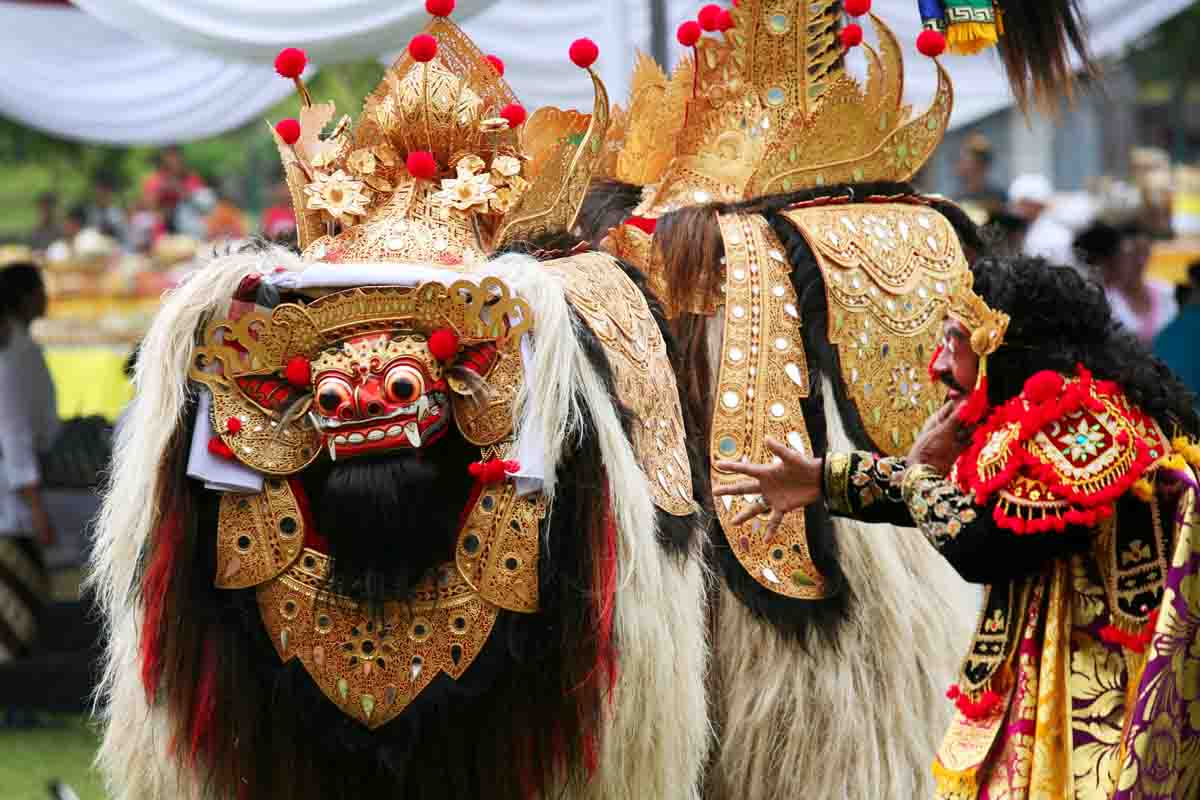Barong Dance, Traditional Dance From Bali
Barong Dance is one of the traditional dances originating from Bali. This dance is one of heritage dances from pre Hindu culture, besides Sangyang dance. The word barong itself comes from the word bahruang, which means bears, a mythological animal that has supernatural powers and is regarded as a protective animal.
This dance uses a doll in the form of four-legged animals or early humans who have magical powers. But in reality in Bali, this barong doll is not only embodied in four-legged animals, but there are also two-legged.
Barong mask making material is made of wood that comes from haunted places, such as in the cemetery, therefore Barong is a sacred and highly sanctified by Hindus in Bali. The performances of this dance are without play and always start with a show demonstration accompanied by different gamelan instruments, such as using Babarongan gamelan, Batel gamelan, and Gong Kebyar gamelan.
The Development of Barong Dance
At first, the Barong was only depicted on four legs, but with its development, Barong is not only described today as an animal that has four legs but can also be two legs, sometimes even depicted as a human being. So, what exactly is the understanding of the Barong? Barong word comes from the sansakerta language, namely Bahruang which means bears. In Hindu mythology, the beast is considered to have supernatural powers and is also often referred to as a protective animal for living things. With this mythology, we can draw the conclusion that this Barong is a protective figure for living beings and the beneficiaries and also the goodness of the surrounding.
Types of Barong Dance
Lion barong is the most common barong found on the island of Bali. In each area of Bali has a guardian spirit in the forest or land. This protective spirit is described in the form of certain animals, such as:
Types of Barong
- Barong Ket, which is a barong shaped like a lion animal, this barong is the most common barong and symbolizes the spirit of goodness.
- Barong Landung, which is a giant tangible barong, this barong is influenced by Chinese culture and its form is similar to Ondel-ondel in Betawi.
- Barong Celeng, which is a wild boar-shaped barong.
- Barong Macan, a tiger-shaped barong or tiger.
- Dragon Barong, which is a dragon animal or snake-shaped barong.
- Barongan Pilangrejo, which is a barong shaped like a lion animal and comes from the juwangi district, this barong describes the symbol of savagery.
In addition to the types of barong above, there are also other types of barong, such as barong brutuk in the village Trunyan. This barong uses the feathers of banana leaves that have been dried and very sacred by the people in Trunyan. There is also a Barong which is generally performed specifically at Ngaben ceremony.


